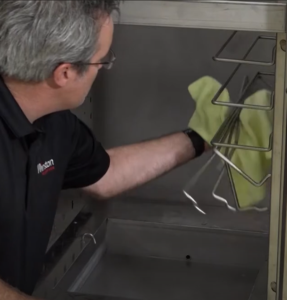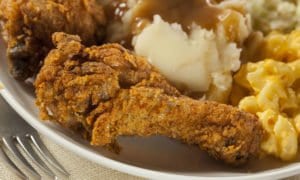Ham. The very word brings to mind the many variations of the savory pork product. In the vast majority of cases, when folks say “ham,” they mean pork. However, I was talking with my friend Valerie Samutin about her lambs on Freedom Run Farm. She told me about the history of lamb ham in Kentucky. Apparently, lamb was the protein of choice for Kentucky settlers in colonial times. In order to preserve lamb for winter consumption, they would cure hind quarters, just like we do with pork.
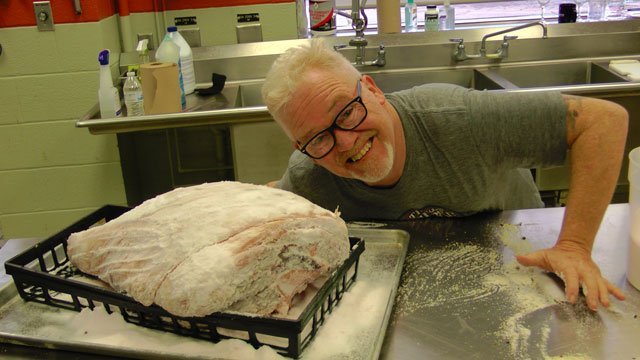
One big salty ham poses next to another big salty ham. The ham on the left is lamb. The ham on the right is our late friend Chef Barry.
I love to fuse historical traditions with new technologies. Our commonwealth was formerly well-known as a core market for sheep and lamb production. Remnants of that heritage can still be found in central Kentucky, where dishes such as the mutton-based burgoo remain very popular. I decided to use Freedom Run Farm’s wonderful lamb to test the hot smoking abilities of our Winston Smoker Box in a CVap® Holding Cabinet. Hot smoked lamb ham!
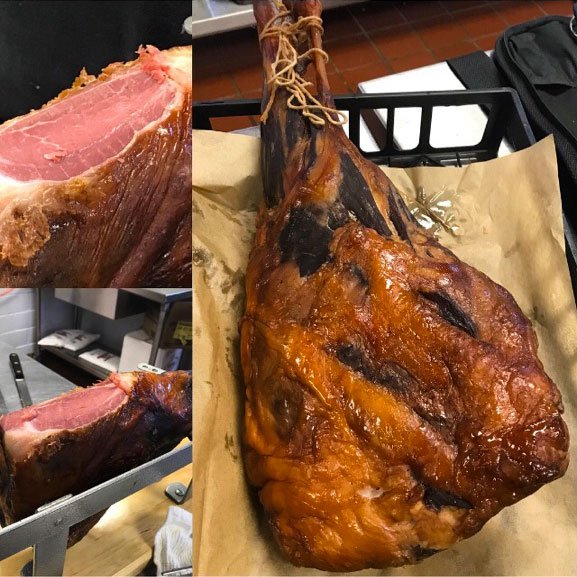
Ingredients
- 50g Prague powder (cure) No. 2
- 80g KY Spice Berries (substitute fresh ground peppercorns if spice berries aren’t available)
- 500g light brown sugar or turbinado sugar
- 700g pure sea salt (iodine free)
- 4-6kg fresh lamb leg, bone in and hoof on
- Sugna:1kg olive oil mixed with flour to make a thick paste ***optional
- (You need 80g cure for each 1kg of lamb leg) Approximately 300- 500 grams of cure per leg
Procedure
Very important! Weigh lamb leg and record weight! Record day and time of curing start as well and keep for your records! You will certainly need this information later, to determine when the hams are ready.
Make curing mixture with the first four ingredients above. Mix thoroughly.
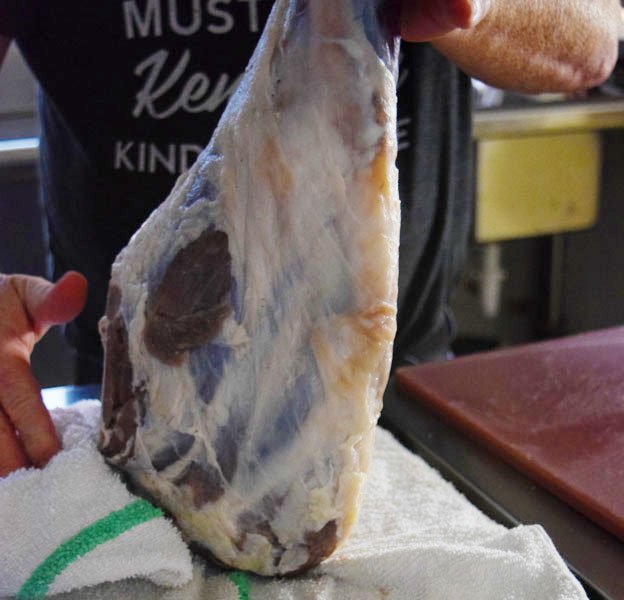
Rinse lamb leg thoroughly and pat dry with a paper towel. Then rub the lamb with the cure mixture. Don’t worry about using too much. Rub firmly, pushing the leg bone with your thumbs. Notably, there is a main artery there that may not have been thoroughly bled.in mind, this process helps work out any remaining blood. Once this is complete, rub more cure around the aitch (hip) bone. This is the exposed bone/joint where the leg was severed from the lamb’s torso (VERY important step).


Place lamb leg on a bed of salt in a nonreactive container. Plastic is preferable, but an old school wooden rack works too. In this case I used nonreactive plastic seeding trays. Place lamb in a refrigerated environment for a minimum of ten days. Turn daily, and make sure that cure is redistributed daily. If necessary, add more cure. The general rule of thumb for curing is one day per kilogram, but no less than ten days.
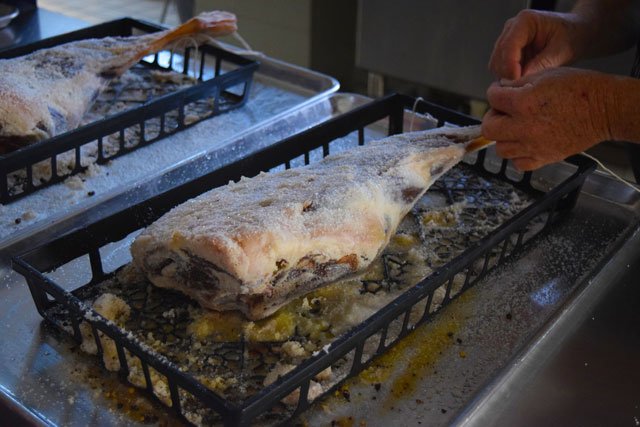




Smoking the Lamb
After the curing period is complete, rinse lamb and refrigerate for 24 hours. This allows for good pellicle formation. Pellicle is a skin or coating of proteins on the meat surface that allows smoke to adhere during the smoking process.
After the 24 hour refrigeration, place lamb hams in a CVap Holding Cabinet at 165°F vapor temp and 170°F air temp. Place hickory chunks in Winston smoker box and set timer for three hours. Once cabinet is preheated, place lamb into CVap and hot smoke until internal temperature reaches 155°F. [Note: Although CVap equipment doesn’t usually require vent hoods, the addition of a smoker box will usually require utilization of a vent hood. Always check local codes.]
After lamb reaches 155°F, remove from CVap cabinet, weigh, and record weight. At this time, some folks like to add a sugna (a mixture of fat and flour) on the cut surface of the ham. This is classically done with prosciutto, iberico, or Appalachian mountain hams to keep the cut surface from excessively drying. In this case, I don’t believe that it is necessary, as lamb takes less time to cure and reach maturity than a traditional leg of pork. Keep in a refrigerated environment until the lamb leg has lost 25-30 % of its original weight. Once this weight loss has been achieved, your lamb ham should be ready.

Lamb preserved this way should be shelf stable for up to six months. There is no need to age longer, because hot smoking kills the enzymes that would generate any further flavor complexities. Once the ham has been cut, wrap cut surface with plastic wrap and refrigerate. Another option is to bone the ham and vacuum seal individual piece that can be cut later.


In this case we sampled to a lot of chef friends, and also shared with Bob Perry at his 3rd annual Kentucky Neurogastronomy Symposium held at the University of Kentucky.



